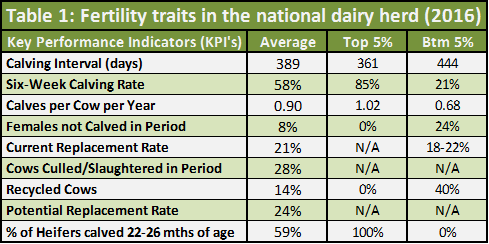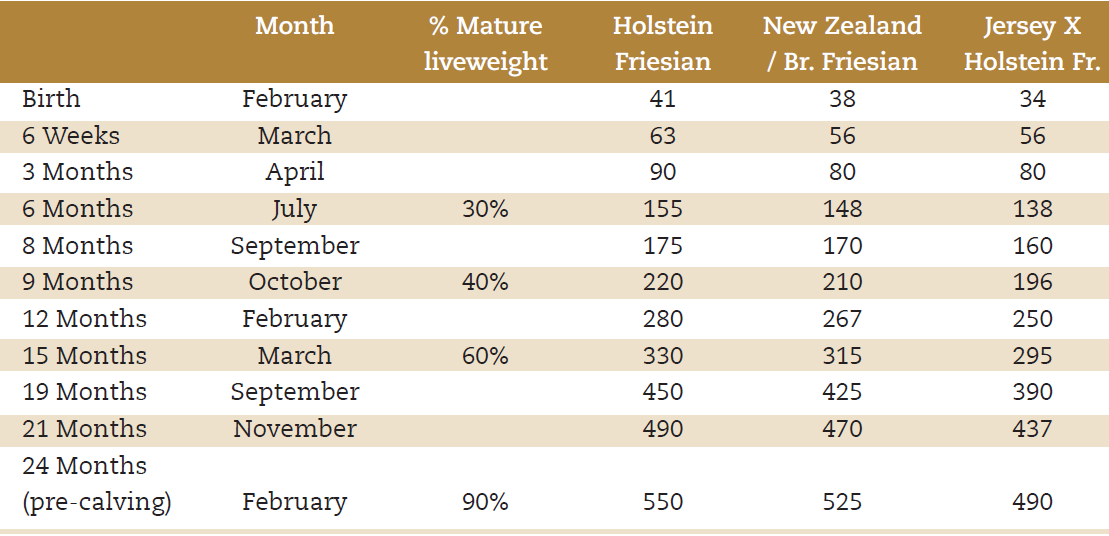The HerdPlus® Dairy Calving reports were released last week. The most visible change that can be seen following the publishing of these reports is that there has been continued improvement in the fertility of the national herd.The average calving interval improved by 3 days from 392 days in 2015, to 389 days in 2016. This has improved from a figure of 403 5 years ago (See graph above).
Similar trends are apparent for other important fertility parameters such as the six-week calving rate, which has seen a 1% increase from 57% to 58% (See Table 1 below).
The five year trend is quite encouraging with positive changes to be seen across the majority of traits. These positive changes can be seen in particular for calving interval, 6 week calving rate, calves/cow/year, females not calved in period and number of recycled cows.
These figures indicate that we are moving in the right direction, however we are still some way off the targets identified by Teagasc as being required to ensure a profitable dairy industry by 2020. For example, the average calving interval of 389 days compared to an industry target of 365 days. Similarly, the six-week calving rate is at 58% compared to an industry target of 70%. Therefore, it’s important that we continue to focus on high EBI bulls with a high fertility sub-index.
 Table 1 shows a summary of the fertility performance for the average, the top 5% and bottom 5% of herds based on data from the latest HerdPlus® Dairy Calving reports. The trends indicate large variation between herds that are achieving exceptional fertility performance (Top 5%) for each of the Key Performance Indicators (KPI’s), to those that are achieving below average performance (Bottom 5%). A full listing of all the dairy statistics can be found on the ICBF Statistics page.
Table 1 shows a summary of the fertility performance for the average, the top 5% and bottom 5% of herds based on data from the latest HerdPlus® Dairy Calving reports. The trends indicate large variation between herds that are achieving exceptional fertility performance (Top 5%) for each of the Key Performance Indicators (KPI’s), to those that are achieving below average performance (Bottom 5%). A full listing of all the dairy statistics can be found on the ICBF Statistics page.
One trait of particular note is the percentage of heifers calved between 22 and 26 months of age. Average performance for this KPI is only 59%, with a number of herds achieving 100% (top 5%), but a similar number achieving 0% (bottom 5%). A key part in achieving two-year calving is having heifers at the correct target weight for breeding (See Table 2). ICBF strongly encourage farmers to weigh their replacement heifers. Heifers that are below target can be identified and corrective action taken. Underweight replacements should be grouped together and fed 1-2kg meal so they achieve the target breeding weight.

